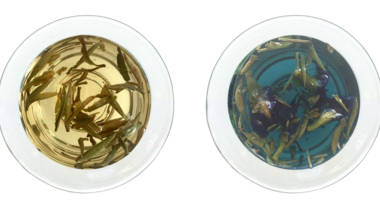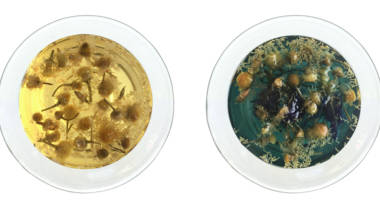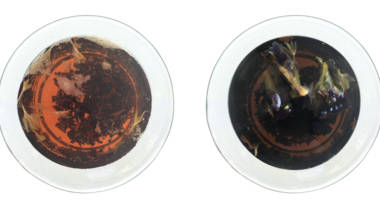Guide to Butterfly Pea Flower aka Blue Tea
by Jessica Maciuch
October 07, 2020

Butterfly Pea Flower, from the Clitoria ternatea plant, is known for the rich blue color it produces when infused. On its own, the butterfly pea flower does not have much of a taste- just a mild alkaline aftertaste that is only noticeable when paired with very delicate base teas. This makes it a fun addition to a wide variety of teas for anyone that likes to play around with vibrant colors.
First, let's try it without any other additions. I tried out a few different pea flower-to-water ratios and eventually settled on approximately 1 tsp (8-10 individual flowers) per cup of water. Increasing the amount of butterfly pea flower beyond this didn't seem to make much of a difference in the final color. After a steep time of 3 minutes at 212°F, a cup of water steeped with 8 individual pea flowers had pretty much the same saturation of color as a cup with double the amount of pea flowers. It produced the vibrant blue color we're used to seeing with Bella Luna Blue !

Other traditional chinese green teas, like a Pi Lo Chun, would produce a similar color. Japanese greens such as Sencha Overture tend to have a more saturated yellow tone, so I would expect a color closer to teal with the butterfly pea flowers added.
Adagio's flavored greens (like the Mango Green) tend to result in a more saturated yellow tea, so adding the pea flowers would produce a more vibrant teal color.

Other white teas tend to have a more yellow color, so adding butterfly pea flower would produce a more teal color, and wouldn't affect the taste quite as much.
A flavored white tea would have much the same result unless the blend contains some hibiscus, such as White Eternal Spring. This would give the base tea a slightly pink-ish hue, which would create a purple color when the pea flower is added.

Another chamomile-based tea such as the Cha Cha blend would produce a slightly darker teal color, depending on what other herbal ingredients are in the blend.

Another green oolong, like Ti Kuan Yin or Coconut Pouchong (a personal favorite) would yield a similar color.
Many of Adagio's flavored oolongs, such as Grapefruit or Vanilla Oolong, use a darker oolong as a base tea. My expectation for the darker oolongs is that the flavor would remain unchanged, but the color would be a greenish-brown, similar to the Earl Grey Bravo shown below.

Adding pea flower to Irish Breakfast and Thai Tea produced much the same result.
I would expect a similar color and no change in taste for other black teas with the exception of a first flush Darjeeling, which might be slightly overpowered by the addition of butterfly pea flower.
I'd also expect the same result from adding pea flower to rooibos teas, which have a similar dark orange hue on their own.
Might want to save your flowers and pass on varieties that brew up quite dark, and just enjoy their delicious flavor!

Adding butterfly pea flower didn't have any effect on this tea's strong fruity flavor. I would expect a similar result from other fruity herbals blends containing hibiscus, such as the popular Blood Orange or Wild Strawberry.

And there you have it- a way to create a tea rainbow with the addition of one little flower!